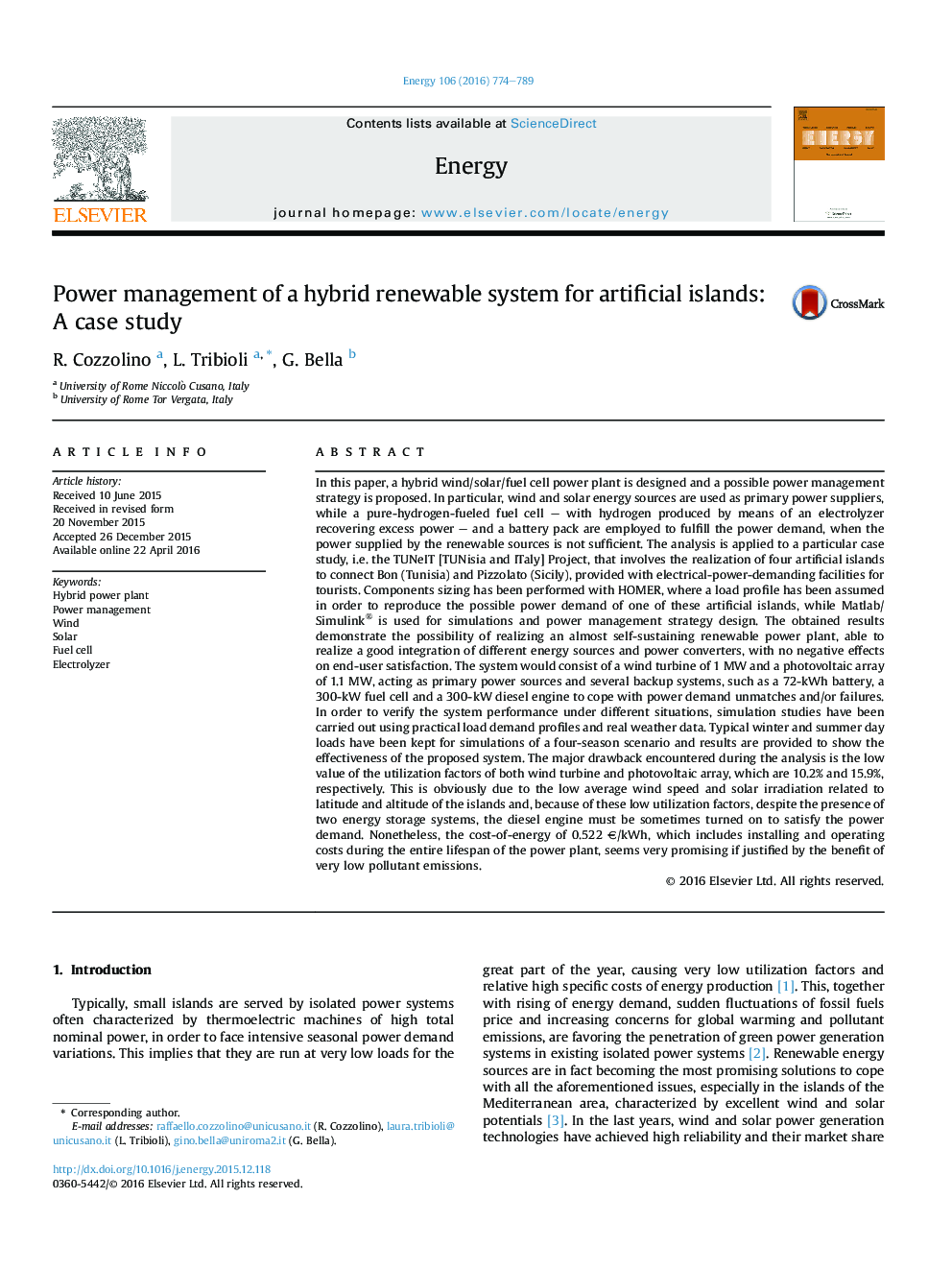| کد مقاله | کد نشریه | سال انتشار | مقاله انگلیسی | نسخه تمام متن |
|---|---|---|---|---|
| 1731000 | 1521442 | 2016 | 16 صفحه PDF | دانلود رایگان |
عنوان انگلیسی مقاله ISI
Power management of a hybrid renewable system for artificial islands: A case study
ترجمه فارسی عنوان
مدیریت قدرت یک سیستم تجدید پذیر ترکیبی برای جزایر مصنوعی: مطالعه موردی
دانلود مقاله + سفارش ترجمه
دانلود مقاله ISI انگلیسی
رایگان برای ایرانیان
کلمات کلیدی
نیروگاه هیبریدی، مدیریت قدرت، باد، خورشیدی، سلول سوختی، الکترولیزر،
موضوعات مرتبط
مهندسی و علوم پایه
مهندسی انرژی
انرژی (عمومی)
چکیده انگلیسی
In this paper, a hybrid wind/solar/fuel cell power plant is designed and a possible power management strategy is proposed. In particular, wind and solar energy sources are used as primary power suppliers, while a pure-hydrogen-fueled fuel cell - with hydrogen produced by means of an electrolyzer recovering excess power - and a battery pack are employed to fulfill the power demand, when the power supplied by the renewable sources is not sufficient. The analysis is applied to a particular case study, i.e. the TUNeIT [TUNisia and ITaly] Project, that involves the realization of four artificial islands to connect Bon (Tunisia) and Pizzolato (Sicily), provided with electrical-power-demanding facilities for tourists. Components sizing has been performed with HOMER, where a load profile has been assumed in order to reproduce the possible power demand of one of these artificial islands, while Matlab/Simulink® is used for simulations and power management strategy design. The obtained results demonstrate the possibility of realizing an almost self-sustaining renewable power plant, able to realize a good integration of different energy sources and power converters, with no negative effects on end-user satisfaction. The system would consist of a wind turbine of 1 MW and a photovoltaic array of 1.1 MW, acting as primary power sources and several backup systems, such as a 72-kWh battery, a 300-kW fuel cell and a 300-kW diesel engine to cope with power demand unmatches and/or failures. In order to verify the system performance under different situations, simulation studies have been carried out using practical load demand profiles and real weather data. Typical winter and summer day loads have been kept for simulations of a four-season scenario and results are provided to show the effectiveness of the proposed system. The major drawback encountered during the analysis is the low value of the utilization factors of both wind turbine and photovoltaic array, which are 10.2% and 15.9%, respectively. This is obviously due to the low average wind speed and solar irradiation related to latitude and altitude of the islands and, because of these low utilization factors, despite the presence of two energy storage systems, the diesel engine must be sometimes turned on to satisfy the power demand. Nonetheless, the cost-of-energy of 0.522 â¬/kWh, which includes installing and operating costs during the entire lifespan of the power plant, seems very promising if justified by the benefit of very low pollutant emissions.
ناشر
Database: Elsevier - ScienceDirect (ساینس دایرکت)
Journal: Energy - Volume 106, 1 July 2016, Pages 774-789
Journal: Energy - Volume 106, 1 July 2016, Pages 774-789
نویسندگان
R. Cozzolino, L. Tribioli, G. Bella,
